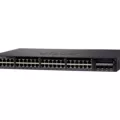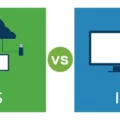Layer 2 protocols are an essential part of modern networks. They help to improve communication between devices and provide additional features that can make networks more efficient. Layer 2 protocols are used to manage the flow of data between devices on a network, as well as for providing additional services like Quality of Service (QoS), VLANs, and other network traffic management functions.
At the most basic level, Layer 2 protocols are responsible for transferring frames (packets) between two nodes on a network. When two nodes need to communicate, they first send out frames containing their destination addresses, which allows Layer 2 protocols to determine where the data should be routed. Once a frame is received by its target node, it is decoded and sent up the protocol stack for further processing by higher-level protocols like TCP/IP.
Aside from simply transferring frames between nodes on a network, Layer 2 protocols also provide additional features that can improve communication efficiency and security. For example, some Layer 2 protocols support virtual LANs (VLANs), which allow users to set up separate networks within one physical location while keeping traffic isolated from other parts of the network. Other Layer 2 features include Quality of Service (QoS) settings, which can prioritize certain types of traffic over others; access control lists (ACLs), which restrict access to certain parts of the network; and Spanning Tree Protocol (STP), which helps prevent loops in Ethernet networks.
Layer 2 protocols play an important role in modern networks, as they help improve communication efficiency and security while also providing additional features that can be used to customize a network’s performance. By understanding how these protocols work and what features they provide, administrators can ensure their networks are running optimally.

Layer 2 and Layer 3 Protocols
Layer 2 protocols are responsible for communication between nodes in a network. They provide the means of addressing and routing data packets, and they often handle error correction and flow control as well. The most common Layer 2 protocol is Ethernet, which provides the means to establish and maintain logical connections between nodes on a network.
Layer 3 protocols are responsible for transmitting data across networks. They use unique IP addresses to identify each node or device on the network, as well as routing information to ensure that data packets reach their destination. The most common Layer 3 protocol is the Internet Protocol (IP), which provides the rules for how data should be routed across networks. IP also enables various types of communication such as email, streaming media, and web browsing.
Is TCP a Layer 2 Protocol?
No, TCP is not a layer 2 protocol. TCP (Transmission Control Protocol) is a layer 4 protocol. It is part of the TCP/IP model and provides reliable end-to-end communication between two hosts in a network. Layer 2 is the Data Link Layer, which provides communication between adjacent nodes on the same physical link. This includes protocols such as Ethernet, ATM, and Frame Relay.
Understanding L1 and L2 Protocols
Layer-1 (L1) protocols are the base layer of blockchain technology or the underlying network that allows for decentralized transactions to occur. These protocols are immutable and secure, and they form the basis of all blockchains. Examples of Layer-1 protocols include Bitcoin, Litecoin, and Ethereum.
Layer-2 (L2) protocols are built on top of L1 protocols, allowing for increased scalability and improved performance by taking certain processes off-chain. They provide features such as privacy, smart contracts, low fees, and faster transaction times. Popular Layer-2 protocols include Lightning Network (for Bitcoin), Liquid Network (for Bitcoin Cash), and Raiden Network (for Ethereum).
BGP: A Layer 2 or 3 Protocol?
No, BGP is not Layer 2 or 3. BGP operates on the OSI Transport Layer (Layer 4), which sits between the Network Layer (Layer 3) and the Data Link Layer (Layer 2). Unlike other routing protocols, such as RIP, which operate on the Network Layer (Layer 3), BGP does not make decisions based on IP addresses, but rather makes decisions based on autonomous system numbers. This allows it to work across different networks, providing a consistent and reliable way of exchanging information between them.
The Layer of a Firewall
A firewall is generally considered a Layer 3 security measure. It works by examining the data packets that pass through it and checking whether they conform to a set of predefined rules. At Layer 3, the firewall can inspect the IP addresses involved in the communication and determine whether they are authorized to communicate or not. It also can check for malicious content in the data packets and block any suspicious traffic from passing through. Additionally, a firewall at Layer 3 can provide additional features such as Network Address Translation (NAT) which allows multiple devices to share a single public IP address.
Is OSPF a Layer 2 Protocol?
Open Shortest Path First (OSPF) is an open standard routing protocol designed for use in IP networks. It is a link-state routing protocol, which means that it works by exchanging information about the state of each of its connected links with other routers in the same network. While OSPF does operate at Layer 2, it is considered a Layer 3 protocol because it uses Layer 3 IP addressing and subnetting to determine how to route packets. It also uses multicast address 224.0.0.5 to send and receive messages between routers.
At the physical layer, OSPF uses either Ethernet or point-to-point links to communicate with other routers. The OSPF packets are encapsulated using either HDLC or PPP, depending on the type of link used. Therefore, although OSPF operates at Layer 2, it still relies on the IP addressing and subnetting of Layer 3 to perform its duties as a router protocol.
Is DNS a Layer 2 Protocol?
No, DNS is not a Layer 2 protocol. The OSI model specifies seven layers of protocols, and DNS operates at the Application layer (Layer 7). Layer 2 of the OSI model is the Data Link layer, which includes protocols such as Ethernet, ARP, and PPP. All of these use physical and data link addresses to transmit data between adjacent nodes on a local network.
Exploring Layer 2 Blockchains
Layer 2 blockchains are separate blockchains built on top of the Ethereum blockchain that help to scale its capabilities and improve transaction speed. They are designed to handle large volumes of transactions without sacrificing security or decentralization. Layer 2 blockchains make use of a variety of technologies such as sidechains, sharding, and state channels to increase scalability. This means that users can send and receive payments faster and more efficiently than they would on the Ethereum main net. Additionally, Layer 2 solutions provide users with access to more features and services than what is available on Ethereum itself. These could include applications such as decentralized exchanges, gaming platforms, privacy coins, stablecoins, or other financial services. In short, Layer 2 solutions are helping to bring scalability, security, and user experience to the Ethereum ecosystem.
Is Ethernet a Layer 1 or Layer 2 Protocol?
Ethernet is a Layer 1 protocol. It operates at the physical layer of the OSI model and is responsible for establishing, maintaining, and terminating connections between devices on a local area network (LAN). It uses physical cabling and radio frequency standards to send data between computers, as well as convert data into bits. Ethernet is also used in Layer 2 of the OSI model, as it defines how packets are structured and transmitted over networks.
Understanding Layer 2 of the OSI Model
Layer 2 of the OSI (Open Systems Interconnection) Model is the Data Link Layer. It is responsible for providing the means to transmit data between network entities in a reliable and secure manner. It provides two important functions: Framing and Error Control.
Framing consists of breaking down larger data units into smaller, manageable frames that are easy to send across the network, while error control ensures that any errors that may occur in the physical layer can be detected and corrected. The Data Link Layer also provides flow control, which allows for data packets to be sent at a rate that is acceptable to the receiving device. Additionally, it includes logical link control (LLC) which handles addressing, sequencing, flow control, and error control at a higher level than the physical layer.
Conclusion
In conclusion, Layer 2 protocols are a vital component of the OSI TCP/IP model, providing a data link layer between network devices. They are used to identify and communicate with devices on a network and can be used in conjunction with Layer-1 blockchains such as Bitcoin, Litecoin, or Ethereum. With its various advantages such as improved scalability, lower latency and faster transaction times, Layer 2 protocols have become increasingly important for many decentralized applications.








